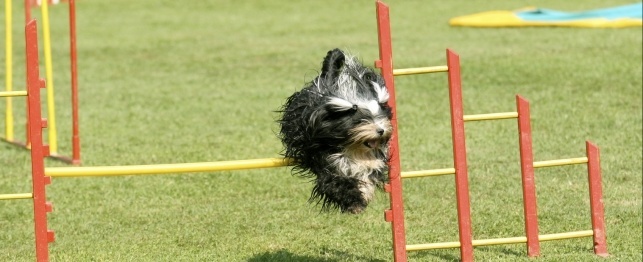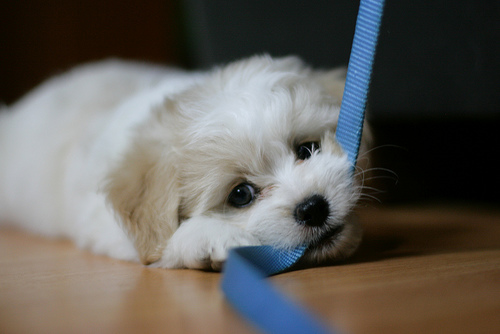If you dog barks loudly and you tell him to "be quiet" but your kids say "stop barking" your dog will be confused. If all family members are consistent in using the same commands, you will have more success in training your dog.
When training, try using the "shake-can" technique. Drop some coins into an empty can and close it up. If your dog does something bad, you can shake the can. Your dog will be startled by the sound and will cease the behavior. If you do this every time the dog exhibits a negative behavior, he will soon learn that these behaviors are not acceptable. Just shake your can a single time, because doing so more often will result in desensitization.
Is your dog getting the food he needs? Some bad behavior could be attributed to an imbalanced diet. Consider changing your dog's diet to something more species-appropriate, and he'll have long-lasting, consistent energy all day. Talk to your dog's vet to make sure there aren't any other issues.
A harness will be more comfortable for you dog, although you will lose some of the control a collar will give you. When you use both a collar and a harness, and only tug the collar when you need to, the dog will learn that he or she must behave while they are in the harness, too.
When in training with your new puppy, don't play rough games like tug of war. Aggressive games promote aggressive behaviors, such as biting. These are games you don't want to play with them until they are a little older and more mature so they don't get used to the bad behavior of nipping.
Learn your dog's signals to help prevent accidents inside. Most dogs go through a serious of behaviors when they need to go to the bathroom. Learning this pattern can help you take your dog out immediately and it shows them what proper behavior is. Being in sync with the natural tendencies of your dog will make house training much easier for both of you.
Good communication is the foundation of proper dog training. You must give consistent and clear signals when you training your dog. This applies to corrections and rewards, as well as your body language, when training. Pay close attention to your dog's actions when giving commands and rewards. If you learn to read his body language, you will know when he is too tired to continue training or when he has the energy to go on.
In order to prevent your dog from jumping on you, grab its paws anytime he jumps on you and gently squeeze them to inform them that this isn't acceptable behavior. It is uncomfortable but a non-painful experience for the dog. They learn that if they want to avoid that discomfort, they need to refrain from jumping up.
Never yell at your dog if he or she excessively barks. Shouting at a barking dog may encourage them to bark more. This feedback makes the dog know that they are not supposed to be barking at what it is they are barking at.
Training a dog can be challenging. Your furnishings are being destroyed, and your patience has reached its limit.

 Agility: an Exciting Dog Sport
Agility: an Exciting Dog Sport
Agility: an Exciting Dog Sport
Agility: an Exciting Dog Sport
 Games for Dogs: Bobbing for Biscuits
Games for Dogs: Bobbing for Biscuits
Games for Dogs: Bobbing for Biscuits
Games for Dogs: Bobbing for Biscuits
 Safe Chew Toys for Your Dog
Safe Chew Toys for Your Dog
Safe Chew Toys for Your Dog
Safe Chew Toys for Your Dog
 Teaching Your Dog Polite Leash Skills - Canine Manners 101 Dog Training Series
Teaching Your Dog Polite Leash Skills
This article i
Teaching Your Dog Polite Leash Skills - Canine Manners 101 Dog Training Series
Teaching Your Dog Polite Leash Skills
This article i
 The Dark Side of Dog Parks – Why Dog Parks May Not Be Your Dog’s Friend
The Dark Side of Dog Parks – Why Dog Parks Ma
The Dark Side of Dog Parks – Why Dog Parks May Not Be Your Dog’s Friend
The Dark Side of Dog Parks – Why Dog Parks Ma